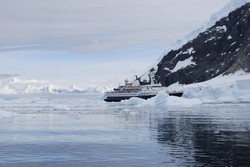Infrastructure to manage marine data
Thousands of research institutes, governmental organisations and private companies in countries bordering European seas collect data from the ocean every day. This data, which includes chemical, biological, geological and geophysical measurements, needs to be coordinated and managed. The EU-funded SEADATANET II(opens in new window) (SeaDataNet II: Pan-European infrastructure for ocean and marine data management) project built on a previous project implemented to manage large and diverse marine data sets. SEADATANET II worked to upgrade the database built in the predecessor project to better coordinate, standardise and provide access to vast data sets. It achieved this with an infrastructure linking 90 national oceanographic data centres and major research institutes from 34 coastal states bordering European seas. To create harmony among a diverse oceanographic community, SEADATANET II standardised its software and data directories, implementing common quality control protocols and common vocabularies. Since SeaDataNet is a distributed infrastructure, connecting diverse data centres and providing integrated online access to multidisciplinary marine data was vital. Standardising software and protocols was also essential to ensure that SeaDataNet complies with the Infrastructure for Spatial Information in the European Community (INSPIRE) process. This initiative, launched by the European Commission, aims to supply European users with integrated information services linked by common standards and protocols. By the end of the project, more than 100 data centres were connected to the infrastructure, and 1.8 million data sets were available for download. The majority (85 %) of this data is public domain, making this the largest public marine database in the world. It also allows SeaDataNet to contribute to global initiatives like the Ocean Data portal (ODP) and the Global Earth Observation System of Systems (GEOSS). The project's research infrastructure has successfully established itself as part of the European research community and several other research projects rely on it to manage their data. The developments have already had a noticeable impact on environmental decision-making mechanisms at the European level.







